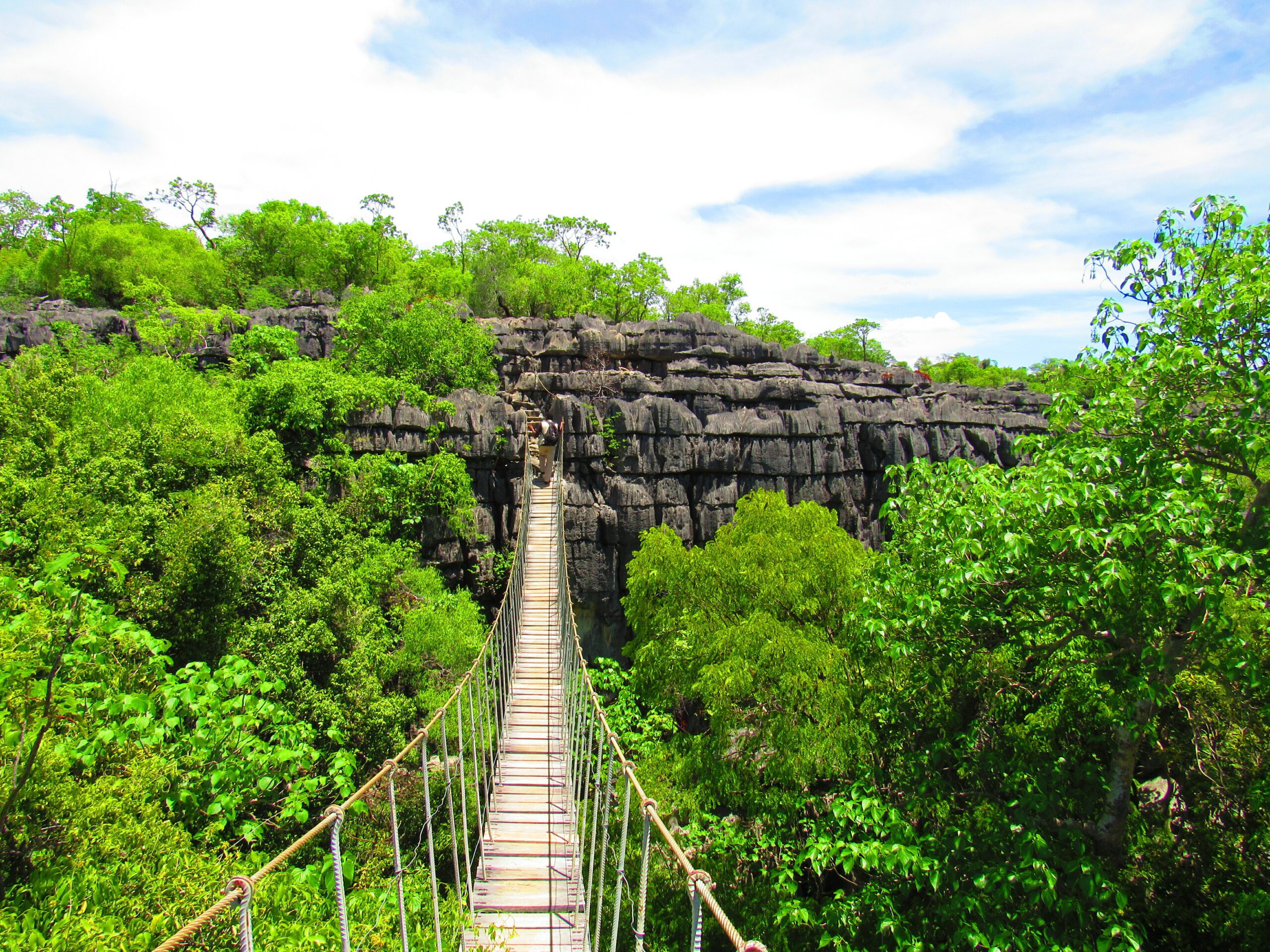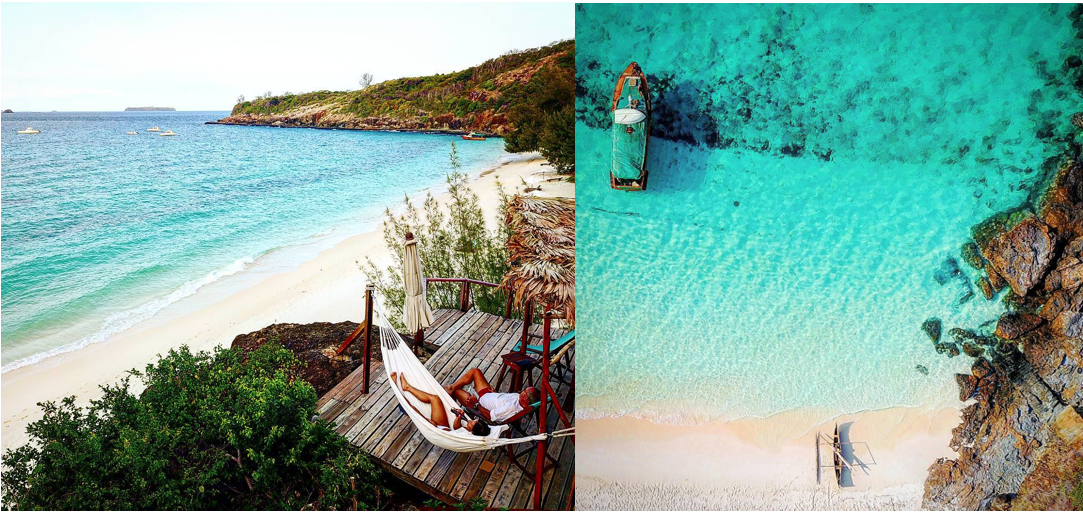Jenny Salentine, EJ veteran and travel specialist, got to know the beauty and quirks of Madagascar firsthand on her latest trip. Here’s what she had to say about this lush, lemur-famed island.
Must visit for the active traveler?
Ankarana National Park
I fell in love with Ankarana! It’s small—only about 70 square miles—near the northern coast of Madagascar, but I couldn’t believe how much diversity packed into that little park. We spent the day hiking with our guide; one moment we were traipsing through dense forest vegetation with lemurs leaping between towering trees, the next we stood perched on the edge of a tsingy plateau that seemed to go on forever.
Lemurs in the forest of Ankarana N.P.
Fun Fact: Tsingy is the Malagasy word for “place where one cannot walk” – a fitting name for these wonderland-esque geologic spires.
Within that sharp, grey world of pinnacles, though, we also found delicate, bright red flowers, which grow nowhere else in the world. It was a landscape unlike anywhere else I’ve ever been, and it felt so refreshing and adventurous to explore there. It really is an amazing opportunity for the traveler who wants to escape the usual and well-worn paths.
Another twenty minutes of walking, and we’d wind up in yet another stunning, entirely different landscape. We roamed from rocky outcroppings to lush forest to a massive sinkhole, where three rivers flood to form an enormous seasonal forest pool, to a 500-year-old baobab.
Tsingy outcropping in the forest.
Fun Fact: In Malagasy, baobabs are referred to as renala, which means “mother of the forest.”
To top it all off, we had the park practically to ourselves. Remoteness is a huge draw here and to Madagascar in genera; it simply doesn’t get a ton of visitors, so you really get to experience the scenery as it was meant to be—in quiet solitude.
And beachside relaxation?
Constance Tsarabajina
If you want the beach-vibe, I loved Constance Tsarabajina. Again, the feeling of being remote and off the map is incredible; it takes an hour and half by boat to reach the private island, which is considered sacred to the Malagasy. It’s so special to spend time in a location with cultural significance like that. You can hike across the island and visit old burial sites, or keep to the beach and go diving and snorkeling in the Indian Ocean. The way history, culture, and pristine natural landscapes blend here was outstanding—you don’t have to pick just beach or just history if you don’t want. You really can have it all.
Dive into the welcoming blue waters of the Indian Ocean. ©Constance Tsarabanjina
Fun Fact: Despite its small size, the island has over twenty prime dive spots.
What should travelers know before they go?
Be patient.
Madagascar doesn’t have the same kind of structure or experience with tourists that other big-name destinations have. That’s what makes it such a thrill to explore—you really do get off the beaten path. You have to go in with an open mind, though. Madagascar isn’t a “check off the highlights” kind of destination, and it’s a big country so you can’t really see it all in one trip anyway. If you’re up for adventure, and know that things may not always go exactly to plan, then you’ll fall into the rhythms of the island. That’s where the magic is.



